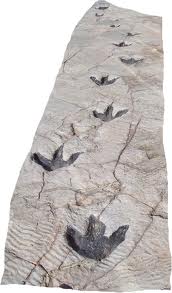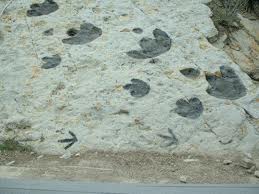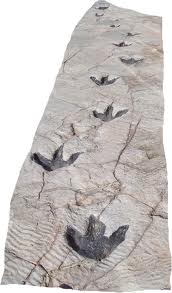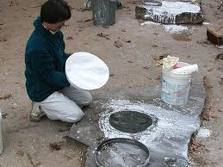Fossils Quiz By Cathy Pons

Fossils Quiz by Cathy Pons explores the nature and formation of fossils, such as trace, mold, and cast fossils. Participants learn to interpret fossil evidence and understand historical geological changes. Ideal for enhancing knowledge in paleontology and earth sciences.
- 1.
When he returned to his laboratory, the architect who discovered the fossils above probably used which of the following terms to record his findings in his journal?
- A.
Body fossil
- B.
Petrified fossil
- C.
Trace fossil
Correct Answer
C. Trace fossilExplanation
The architect who discovered the fossils most likely used the term "trace fossil" to record his findings in his journal. This is because trace fossils refer to the evidence of an organism's activity rather than the actual preserved remains of the organism itself. Since the architect discovered fossils, it suggests that he found imprints or tracks left behind by organisms rather than their actual body parts or petrified remains. Therefore, "trace fossil" would be the appropriate term to describe these findings.Rate this question:
-
- 2.
This fossil formed when a dinosaur stepped in mud millions of years ago, and the mud hardened over time. This type of fossil is known as a:
- A.
Mold fossil
- B.
Cast fossil
- C.
Body fossil
Correct Answer
A. Mold fossilExplanation
A mold fossil is formed when a dinosaur or any other organism leaves an impression in soft sediment, such as mud, and the sediment hardens over time. The organism itself is not preserved, but the impression or mold of its shape is left behind. This type of fossil provides valuable information about the size and shape of the organism, but not its actual physical remains.Rate this question:
-
- 3.
The fossils above show a dinosaur's footprint. While archaeologists are interested in these types of fossil, they do not:
- A.
Preserve an actual body part of the dinosaur
- B.
Give the shape of the dinosaur's footprint
- C.
Give any information about how the animal behaved
Correct Answer
A. Preserve an actual body part of the dinosaurExplanation
The fossils of a dinosaur's footprint do not preserve an actual body part of the dinosaur. Fossils are the remains or traces of ancient organisms, and in this case, the footprint is a trace left by the dinosaur rather than a physical part of its body. Fossils can provide information about the shape and size of the footprint, but they do not give any information about how the animal behaved.Rate this question:
-
- 4.
The fossil photo shows the shape of dinosaur's footprint. The fossil formed when mud and minerals settled into the imprint left by a dinosaur after it took a step. The person is making a:
- A.
Mold fossil
- B.
Cast fossil
- C.
Body fossil
Correct Answer
B. Cast fossilExplanation
The correct answer is cast fossil. A cast fossil is formed when the original organic material of an organism decomposes and is replaced by minerals, leaving behind a replica or cast of the organism's shape. In this case, the mud and minerals settled into the imprint of the dinosaur's footprint, creating a cast fossil of the footprint shape.Rate this question:
-
- 5.
A fossil must be _____________________
- A.
Created by organic processes-living at one time
- B.
10,000 years old
- C.
Both of the above
Correct Answer
C. Both of the aboveExplanation
A fossil must be both created by organic processes-living at one time and 10,000 years old. Fossils are the preserved remains or traces of organisms that lived in the past. They are formed through a process called fossilization, where the organic material of an organism is gradually replaced by minerals over time. Therefore, for something to be considered a fossil, it must have been created by organic processes, indicating that it was once alive, and it must also be at least 10,000 years old to have undergone the necessary geological processes for preservation.Rate this question:
-
- 6.
Marine fossils have been found in exposed rock layers in South Carolina. Which of the following is the best interpretation of this discovery?
- A.
They were carried by humans to South Carolina.
- B.
Parts of South Carolina were once covered by water.
- C.
Marine organisms evolved from land-dwelling organisms.
Correct Answer
B. Parts of South Carolina were once covered by water.Explanation
The discovery of marine fossils in exposed rock layers in South Carolina suggests that parts of South Carolina were once covered by water. This is because marine fossils are typically found in areas that were once underwater. This interpretation is supported by the evidence of the fossils and is the most logical explanation for their presence in the rock layers.Rate this question:
-
- 7.
Millions of years ago, the ancestors(Eohippus) of the modern horse were small animals, only about .61 meters tall. We know this because…
- A.
Cave drawings show the size of these ancient horses.
- B.
All animals get larger over long periods of time.
- C.
Fossil skeletons have been reconstructed by paleontologists.
Correct Answer
C. Fossil skeletons have been reconstructed by paleontologists.Explanation
The correct answer is "fossil skeletons have been reconstructed by paleontologists." This is because paleontologists study fossils, which are the preserved remains or traces of ancient organisms. By examining the fossilized skeletons of Eohippus, paleontologists can determine their size and characteristics, providing evidence that these ancestors of modern horses were small animals. Cave drawings may provide insights into ancient horses, but they may not accurately depict their size. The statement that all animals get larger over long periods of time is a generalization and not specific evidence for the size of Eohippus.Rate this question:
-
- 8.
If you examine a rock sample and observe fossils in it, what type of rock does the sample represent?
- A.
Igneous
- B.
Metamorphic
- C.
Sedimentary
Correct Answer
C. SedimentaryExplanation
If you examine a rock sample and observe fossils in it, the sample represents a sedimentary rock. Sedimentary rocks are formed from the accumulation and compaction of sediments, which can include organic remains such as fossils. Fossils are typically found in sedimentary rocks because they are formed in environments where the conditions are favorable for the preservation of organic material, such as in lakes, rivers, or oceans. Therefore, the presence of fossils in a rock sample indicates that it is most likely a sedimentary rock.Rate this question:
-
- 9.
Which of the following do fossils reveal about the Earth?
- A.
Fossils tell us very little about the earth's past history
- B.
Igneous rock fossil are very accurate
- C.
Past climate changes, environments and earth surface changes over time
Correct Answer
C. Past climate changes, environments and earth surface changes over timeExplanation
Fossils provide valuable information about the past climate changes, environments, and earth surface changes over time. By studying fossils, scientists can determine the types of plants and animals that lived in different periods, which gives insights into the environmental conditions and how they have evolved. Fossils also help in understanding the geological processes that have shaped the earth's surface over millions of years. Therefore, the answer "Past climate changes, environments, and earth surface changes over time" is correct as fossils provide evidence and clues about these aspects of the earth's history.Rate this question:
-
- 10.
Using the choices below, identify the fossils formed by mineral replacement
- A.
Dinsaur tracks and black outlines of plant leaves
- B.
Petrified wood and dinsaur bones
- C.
Nothing is formed this way
Correct Answer
B. Petrified wood and dinsaur bonesExplanation
Petrified wood and dinosaur bones are fossils formed by mineral replacement. Petrified wood is formed when the organic material of wood is replaced by minerals, such as silica, over time. This process preserves the structure of the wood, turning it into stone. Dinosaur bones can also undergo mineral replacement, where the original bone material is gradually replaced by minerals, such as calcium carbonate or silica. This process helps in preserving the shape and structure of the bones, turning them into fossils.Rate this question:
-
Quiz Review Timeline +
Our quizzes are rigorously reviewed, monitored and continuously updated by our expert board to maintain accuracy, relevance, and timeliness.
-
Current Version
-
Mar 21, 2023Quiz Edited by
ProProfs Editorial Team -
Nov 13, 2010Quiz Created by
Cpons





